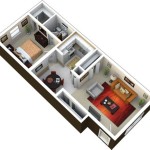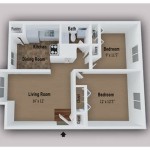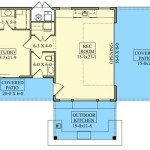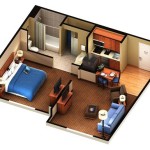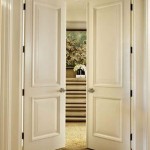Best Smart TVs for Your Bedroom: A Comprehensive Guide
Selecting the right smart TV for a bedroom presents a unique set of considerations compared to choosing one for a larger living space. Factors such as screen size, resolution, viewing angles, audio performance, and smart features become even more critical when optimizing the viewing experience within the confines of a bedroom. This article explores the key aspects to consider when choosing a smart TV for a bedroom and highlights some of the currently available models that excel in this niche.
The primary differentiating factor between a bedroom TV and one destined for the living room is scale. Bedrooms typically have limited space, necessitating a smaller screen that doesn't overwhelm the environment. A screen size between 32 and 55 inches is generally considered optimal, depending on the viewing distance. Measuring the distance between the bed and the intended TV placement location is crucial for determining the ideal screen size. Overly large screens can lead to discomfort and eye strain, particularly when viewed from a close distance, while undersized screens can diminish the viewing experience. The optimal viewing angle often dictates screen size as well, with wider angles benefiting from larger screens to maintain consistent picture quality across the viewing area.
Resolution plays a vital role in image clarity and detail. While 4K resolution (3840 x 2160 pixels) has become the standard for larger TVs, it's not always a necessity for smaller bedroom screens. A 1080p (1920 x 1080 pixels) resolution can still deliver a sharp and detailed image, especially at smaller screen sizes. However, if the budget allows and the screen size is closer to the 55-inch threshold, investing in a 4K TV will provide a noticeable improvement in picture quality, particularly when viewing 4K content from streaming services or UHD Blu-ray discs.
Beyond resolution, other picture quality factors should be considered. High Dynamic Range (HDR) enhances contrast and color accuracy, resulting in a more vibrant and realistic image. Look for TVs that support HDR10 or Dolby Vision, two common HDR formats. The type of panel technology also influences picture quality. LED-backlit LCD TVs are the most common and affordable option. QLED TVs, which use quantum dot technology, offer improved color accuracy and brightness compared to standard LED TVs. OLED TVs, with their self-emissive pixels, deliver the best contrast and black levels, but they tend to be more expensive.
Key Point 1: Size and Viewing Distance Considerations
The bedroom's dimensions dictate the appropriate TV screen size. Overcrowding the room with an excessively large screen detracts from the overall viewing experience. Consider the typical viewing distance from the bed to the TV's intended location. A general rule of thumb is that the viewing distance should be approximately 1.5 to 2.5 times the screen's diagonal measurement. For example, if the viewing distance is 6 feet (72 inches), a 32-inch to 48-inch TV might be appropriate. Utilizing online screen size calculators can provide a more personalized recommendation based on specific dimensions and viewing preferences.
Furthermore, the viewing angle should be considered. Those who primarily watch TV alone and face the screen directly can opt for a TV with a narrower viewing angle. However, if multiple people watch from different positions in the room, a TV with a wider viewing angle is essential to ensure consistent picture quality for everyone. Some TVs utilize IPS (In-Plane Switching) panels, which offer wider viewing angles compared to VA (Vertical Alignment) panels, although VA panels generally offer better contrast ratios.
Key Point 2: Smart Features and Streaming Capabilities
The "smart" aspect of a smart TV is crucial for accessing streaming services, apps, and other online content. Most smart TVs come equipped with built-in Wi-Fi and an operating system, such as Roku TV, Android TV, webOS, or Tizen. Each operating system offers a different user interface, app selection, and features.
Roku TV is known for its simple and user-friendly interface and extensive app library. Android TV offers access to the Google Play Store, providing a wide range of apps, games, and services. WebOS, found on LG TVs, is praised for its smooth performance and intuitive interface. Tizen, used by Samsung TVs, offers a clean and customizable user experience. Consider which operating system aligns best with personal preferences and the desired app ecosystem.
Beyond the operating system, other smart features should be considered. Voice control, via built-in assistants like Google Assistant or Amazon Alexa, allows users to control the TV with voice commands. Screen mirroring, using technologies like Chromecast or AirPlay, enables users to cast content from their smartphones or tablets to the TV screen. Some smart TVs also offer built-in web browsers and gaming capabilities.
Key Point 3: Audio Performance and Connectivity
The built-in speakers on most TVs are often adequate for casual viewing, but they may not provide the best audio experience. Consider the audio quality if you plan to rely primarily on the TV's built-in speakers. Some TVs offer enhanced audio features, such as Dolby Atmos or DTS Virtual:X, which can simulate immersive surround sound. However, for a more immersive and high-fidelity audio experience, consider connecting external speakers or a soundbar.
Connectivity options are also essential. HDMI ports are necessary for connecting devices such as Blu-ray players, gaming consoles, and streaming devices. Look for TVs with multiple HDMI ports to accommodate all desired devices. USB ports allow for connecting external storage devices, such as flash drives or hard drives, to play media files. An optical audio output or HDMI ARC (Audio Return Channel) allows for connecting a soundbar or receiver. A headphone jack offers a private listening option.
Specifically for bedroom environments, consider the placement of the TV's ports. If the TV is wall-mounted, ports located on the side are often more accessible than those located on the back. Furthermore, the ability to connect headphones without disturbing others is a significant advantage in a bedroom setting.
Beyond the core features, additional factors can influence the choice of a bedroom TV. The TV's design and aesthetics should complement the room's decor. A sleek and minimalist design can blend seamlessly into the environment. The TV's stand should be sturdy and stable, especially if it's placed on a dresser or nightstand. The remote control should be easy to use and navigate. Some TVs come with backlit remotes, which can be helpful in a dark bedroom. The TV's energy efficiency can also be a factor, particularly for those who watch TV frequently.
Budget constraints often play a significant role in the decision-making process. While high-end TVs offer the best picture quality and features, more affordable options can still provide a satisfying viewing experience. Researching different brands and models within the desired price range and reading reviews from reputable sources can help identify the best value for money. Consider the long-term cost of ownership, including energy consumption and potential maintenance expenses.
Noise levels should be considered. Some TVs, depending on their internal cooling mechanisms, can generate noticeable fan noise, especially in a quiet bedroom environment. Researching customer reviews can indicate whether a particular TV model is prone to excessive noise. Actively cooled TVs (those with fans) should generally be avoided in favour of passively cooled options for the bedroom. OLED TVs are often passively cooled as they inherently run cooler than LED/LCD and QLED TVs.
Finally, warranty and customer support should be considered. A longer warranty provides peace of mind in case of any defects or issues. Reliable customer support can be invaluable if technical assistance is needed. Before making a purchase, research the manufacturer's warranty policy and customer support reputation.

The 2 Best 32 Inch Tvs Of 2025 Reviews By Wirecutter

The Best 4k Tv On A Budget For 2025 Reviews By Wirecutter

The Best Tvs Of 2025 Reviews By Wirecutter

The Best Tvs Of 2025 Reviews By Wirecutter

Best Smart Tv Of 2025 Cnet

5 Best Tvs For The Bedroom Which Devices Are Worth Considering In 2025 News Am Tech Innovations And Science

Best Smart Tv Of 2025 Cnet

The Best Cheap Tvs For 2025 Pcmag

Best Smart Tv Of 2025 Cnet

The 8 Best Tvs Of 2025 Rtings Com


